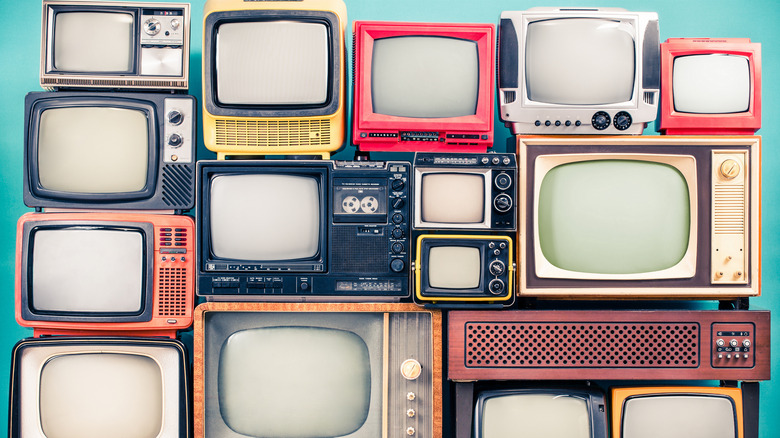Who Invented The Television?
Who do we have to thank for the groundbreaking invention of television? Like many technological advances, it was the result of several people building on each other's work over the course of decades.
As History reports, the story dates as far back as Samuel Morse's eponymous Morse Code, and the development of the revolutionary telegraph, to which he was a major contributor. A painstaking way of relaying messages across long distances it may have been, but it was a remarkable advancement. The year 1866 saw a connection made from Europe to the United States, just over 20 years after Morse's first Washington-to-Maryland telegraph communication in 1844. This, in turn, led to the development of the telephone, which (per Britannica) was patented by inventor Alexander Graham Bell in 1876. The next ambitious step was to find a way to send pictures as well as voices and sounds.
According to ThoughtCo, it was Paul Nipkow who developed the first mechanical "television" in 1884. It transmitted pictures by means of a spinning disk, and Nipkow dubbed it an electric telescope. Pioneers such as Abbe Giovanna Caselli with their Pantelegraph (which sent only stills, in 1862) and Willoughby Smith (who discovered selenium's importance in transmitting images electronically the following decade) had paved the way for this.
From there, according to Biography, John Logie Baird took the early television ball and ran with it. The enterprising engineer, lacking funds or support, channeled the MacGyver of the future and invented what he called a televisor from, among other simple things, cardboard, wax, and a bicycle lamp.
Several brilliant inventors had a vital role to play
Primitive as the device was, Biography goes on, Baird managed to transmit an image of the head of a ventriloquist's dummy in 1925. Things moved quickly from there: in 1928, a successful New York to London transmission was made, and before the decade was out, the British Broadcasting Company began airing its first programming.
The true future of the invention, however, was in electronic televisions, which, per Biography, offered clearer pictures than Baird's mechanical ones (which the BBC stopped using in 1937). According to Early Television Museum, Philo Farnsworth and Vladimir Zworykin were independently engaged in a race for success with such a system, which required a camera tube and cathode ray system to function.
Each used different equipment and both were given trial runs by interested broadcasters. "The Baird Television company uses the electron camera patented by the Farnsworth Television company of the United States," reported Popular Mechanics magazine in October of 1935 (via Early Television Museum), "while the Marconi Television company ... plans to use the 'iconoscope,' or electrical scanner, produced by Dr. Zworykin." Television went on to become an unstoppable success, and Farnsworth and Zworykin are just two of the many visionaries instrumental in its creation.

